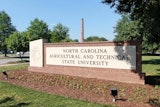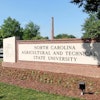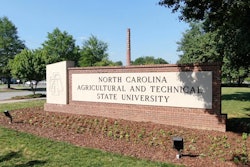Recounting her experiences recently as a child growing up on an isolated farm in North Carolina during the 1940s, Ms. Martin told me that STEM began for her with the chore of picking green tobacco worms off the crop, some of which she kept as “pets” while others were subjected to rigorous “scientific” protocols that she designed herself. This early work would lead to degrees in biology and education from Fayetteville State University and a teaching career that for some 40 years focused on nurturing talent and exposing young people to the wonders of agricultural science.
Last month’s historic passage of comprehensive immigration reform in the United States Senate, in addition to improving the hopes and prospects of millions of undocumented immigrants, both affirms and undergirds the heroic efforts of teachers like Ms. Martin by establishing a STEM Training and Education fund for under-served and under-resourced students.
Twenty percent of the fund is targeted to Historically Black Colleges and Universities (HBCUs) and other minority serving institutions through a special provision created by Senators Charles Schumer (D-New York), Orrin Hatch (R-Utah), and Mary Landrieu (D-Louisiana).
The inclusion of this provision within comprehensive immigration reform is evidence of the central and critical role that HBCUs, Predominantly Black Institutions (PBIs), and Minority Serving Institutions (MSIs) must play in training and graduating the next generations of excellent and diverse professionals in critical STEM areas. The funding provision is also the requisite seed capital that accompanies the growth that must occur within STEM industries in order to sustain a rebounding American economy.
America is at a cultural, technological, economic and demographic crossroads. At precisely the time when education and training in STEM is most critical, there are insufficient numbers of Americans generally and African-Americans particularly being taught the knowledge and skills to compete at the level and caliber of contribution the country needs in the 21st century.
A confluence of factors is partially responsible for the current crisis: the need for more young Americans studying science and mathematics, especially black and brown students; not enough students in the pipeline to replace in a timely way the current cohort of retiring scientists and engineers; and the uncertain immigration status of international students who have earned advanced STEM degrees in the United States.
Given the inherent challenges of creating a highly trained workforce practically overnight, the establishment of the STEM Training and Education Fund represents decisive action and a sound investment strategy by the U.S. Senate. Studies have demonstrated consistently that HBCUs are economic engines in their communities driving an impact of $10 billion and 180,000 full and part-time jobs. If HBCUs can produce these results under extremely adverse circumstances, the ROI for America would increase exponentially were these institutions to receive additional infusions of funding for STEM.
Moreover, HBCUs are closing the race and ethnicity-based achievement gaps in STEM. In 2000, for example, at least 40 percent of all African-American students who received a baccalaureate degree in physics, chemistry, astronomy, environmental sciences, mathematics and biology graduated from HBCUs.
According to Diverse Business News, HBCUs represent eight of the top 10 institutions producing graduates in biological and biomedical sciences and six of the top 10 schools producing graduates in engineering.
The emphasis on the ability of HBCUs to cultivate qualified prospects in science and mathematics extends well beyond students’ time as undergraduates. HBCUs also represent eight of the top 10 colleges graduating African-American students who go on to earn Ph.Ds. in science and engineering. HBCUs have educated and conferred degrees on more than 50 percent of the nation’s African-American public school teachers and 70 percent of African-American dentists and physicians.
Working through NAFEO, the nation’s only membership and advocacy association for the 105 Historically Black Colleges and Universities and 92 Predominantly Black Institutions, these institutions are ready to substantially increase the number of entrepreneurs and professionals in high-need disciplines, particularly in the critical STEM areas.
The STEM fund will enable the nation’s HBCUs—which represent just 3 percent of American colleges and universities but graduate 40 percent of Black STEM professionals—to enhance their success and move the nation closer toward a diverse scientific and technological workforce that will contribute to the “America Built to Last” called for by the president in his last State of the Union Address.
Its very existence in the immigration bill is a bipartisan demonstration of the importance of making strategic investments in the colleges and universities that are accomplishing the lion’s share of educating the growing diverse populations of the nation and should set the bar for how comprehensive immigration reform is handled in the House of Representatives.
If the lessons of the 1960s teach us anything, it’s that real progress is not built on cautious compromises, but on an agenda on behalf of black and brown students that, to paraphrase Robert Kennedy, doesn’t look at things the way they are, and ask why … but dreams of things that never were, and asks why not?”
That’s the kind of agenda that NAFEO will continue to plead with passion and persistence.
Dr. Lezli Baskerville is President & CEO of the National Association for Equal Opportunity in Higher Education, the membership organization for all of the nation’s historically and predominantly black colleges and universities.















